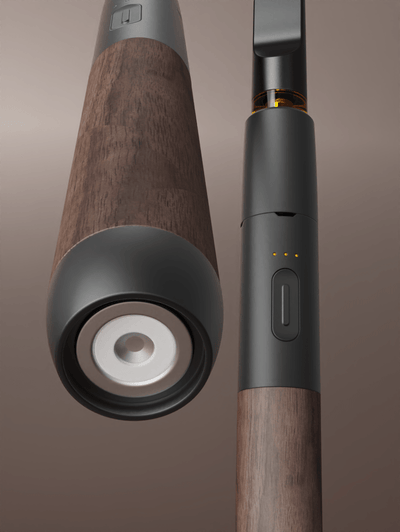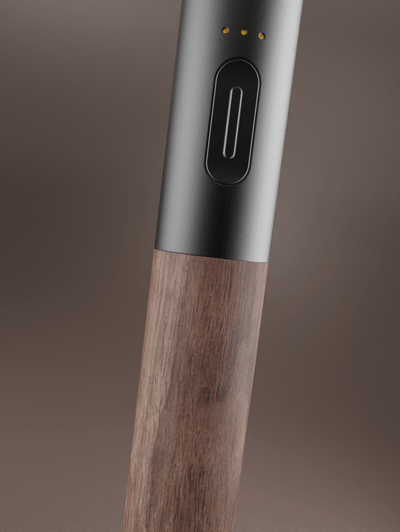Battery Construction
Battery construction is a fundamental aspect of vaping, directly impacting performance, safety, and longevity. Understanding the differences in battery design can help vapers make informed choices about which device best suits their needs.
Material
Vaporizer batteries typically consist of cylindrical lithium-ion cells encased within protective housings. These cells are composed of anode, cathode, and electrolyte materials. The anode is usually made of graphite, while the cathode can be constructed from various lithium compounds like manganese dioxide or nickel oxide. The electrolyte, a liquid or gel, facilitates ion flow between the anode and cathode during charging and discharging.
Dimensions
Dimensions in battery construction play a crucial role in determining compatibility with various devices and influencing overall vaping experience. Battery diameter, measured in millimeters (mm), dictates its fit within vaporizers and cartridges. Common diameters include 18mm, 20mm, and 22mm, with some specialized batteries offering larger or smaller sizes. Height, typically expressed in millimeters as well, affects the battery’s capacity and overall length.
Weight
Battery construction significantly influences vaping performance, safety, and lifespan. A key distinction lies in the weight of the battery, which is often directly correlated with its size and internal components. Heavier batteries generally denote a higher capacity, potentially leading to longer vaping sessions before needing a recharge.
- Battery weight is measured in grams (g) and can range widely depending on factors like cell chemistry, capacity, and overall design.
- Thicker or larger batteries often have a higher weight due to increased internal components and more active material within the lithium-ion cells.
- Lighter batteries typically prioritize portability and are commonly found in smaller vaping devices aimed at discreet use or portability.
Charging and Battery Life
The longevity and performance of a vaping device are heavily reliant on its battery. Understanding the intricacies of battery construction can empower vapers to make informed decisions about their vaping experience. Factors such as diameter, height, and weight all contribute to the overall functionality and user satisfaction.
Charging Port Type
Charging is essential for keeping your vape device functioning. Most vape batteries utilize USB charging via a standardized port like Micro-USB or USB-C. The charging time varies depending on factors like battery capacity, charger output, and the type of cable used. It’s crucial to use a reputable charger and cable designed for lithium-ion batteries to prevent damage or overheating.
Battery life is another key consideration. This is influenced by factors such as battery capacity (measured in milliampere-hours or mAh), device wattage, and usage patterns. Higher mAh ratings generally indicate longer battery life. Proper charging habits, like avoiding deep discharges and utilizing a dedicated vape charger, can also help maximize battery lifespan.
The type of charging port on your vape battery is important for compatibility with chargers. Common types include Micro-USB, USB-C, and proprietary ports specific to certain brands. Make sure the charger you use matches the port on your battery to ensure proper charging.
Charging Speed
Charging speed depends on various factors including the battery’s capacity, the wattage of the charger, and the type of cable used. Fast chargers can significantly reduce charging time compared to standard chargers.
It’s generally recommended to use a dedicated vape charger rather than generic USB chargers for optimal performance and safety. Overcharging can damage the battery, so using a charger with overcharge protection features is advisable.
mAh Capacity

Understanding the mAh capacity of a vape battery is crucial for determining its lifespan and overall performance. mAh stands for milliampere-hours, representing the amount of electrical charge the battery can hold. A higher mAh rating indicates a larger battery capacity, allowing for longer vaping sessions before needing a recharge.
Battery life is influenced by factors such as wattage usage and individual vaping habits. However, a higher mAh rating generally translates to more vaping time on a single charge. When comparing batteries with different mAh ratings, remember that other factors like device design and battery efficiency also play a role in overall runtime.
Choosing a vape battery with a suitable mAh capacity depends on your individual vaping needs and preferences. Consider the frequency of use, desired session length, and portability requirements. For frequent vapers or those who prefer extended sessions, a battery with a higher mAh rating may be more suitable.
Power Output and Settings
Power output is a crucial factor in determining the vaping experience. It refers to the amount of energy delivered to the atomizer, influencing factors like vapor production and flavor intensity. Vape batteries often feature adjustable power settings, allowing users to customize their vaping style. These settings are typically expressed in watts (W) or volts (V), with higher values generally resulting in more powerful vapor. Understanding power output and settings empowers vapers to fine-tune their device for optimal performance.
Wattage Range
Power output is a crucial factor in determining the vaping experience. It refers to the amount of energy delivered to the atomizer, influencing factors like vapor production and flavor intensity. Vape batteries often feature adjustable power settings, allowing users to customize their vaping style. These settings are typically expressed in watts (W) or volts (V), with higher values generally resulting in more powerful vapor.
- Wattage Range: Most vape batteries offer a wattage range that dictates the maximum power output they can deliver. This range varies depending on the battery’s capacity and internal circuitry.
- Low Wattage Settings: Ideal for beginners or those who prefer milder vaping experiences, low wattage settings produce less vapor and heat.
- High Wattage Settings: Experienced vapers may opt for higher wattage settings to achieve thicker, denser vapor clouds and enhanced flavor intensity.
Voltage Range
Voltage range refers to the span of voltage levels a battery can output. It directly influences the power delivered to the atomizer, affecting both vapor production and taste. Vape batteries with wider voltage ranges offer greater customization for vapers who prefer to fine-tune their experience.
Temperature Control Options
Temperature control is an increasingly popular feature in modern vape batteries. It allows users to set a specific temperature range at which the atomizer heats up, ensuring consistent vapor production and flavor. This is particularly beneficial for devices that use coils with lower resistance or when using thicker e-liquids.
Temperature control settings are typically expressed in degrees Celsius (°C) or Fahrenheit (°F). Users can adjust these settings to their preference, finding the optimal temperature range for their desired vaping experience. Many advanced vape batteries offer preset temperature modes for different e-liquid types or coil resistances.
Benefits of Temperature Control
- Improved Flavor Consistency: By maintaining a consistent heating temperature, temperature control helps ensure that the e-liquid is vaporized evenly, resulting in more consistent flavor.
- Reduced Risk of Dry Hits: Temperature control helps prevent dry hits by ensuring the coil heats up sufficiently to properly vaporize the e-liquid.
- Enhanced Safety: By preventing overheating of the coils and e-liquid, temperature control features can help reduce the risk of harmful chemical reactions or potential damage to the device.
Design and Aesthetics
In the world of vaping, aesthetics play a significant role in attracting users. Design choices can range from sleek and minimalist to bold and vibrant, influencing not just how a vape looks but also its perceived status and appeal.
Overall Style
When it comes to vaping devices, aesthetic preferences are diverse, and manufacturers cater to a wide range of tastes. Some vapers prioritize functionality over aesthetics, while others consider design a crucial element in their overall vaping experience.

- Minimalist Designs: These vapes often feature clean lines, simple shapes, and muted colors, appealing to users who value a sleek and understated look.
- Bold and Vibrant Aesthetics: Some vapes boast eye-catching designs with intricate patterns, vibrant color schemes, or unique materials, attracting users who want a device that stands out.
- Customizable Designs: Certain vape devices allow for personalization through interchangeable parts, skins, or engraving options, enabling users to create a truly unique vaping experience.
Button Design
Button design in vaping devices plays a crucial role in user experience and aesthetics. The button often serves as the primary interface for activating the device, controlling power output, and navigating menus.
A well-designed button should be responsive, tactile, and easily accessible. It should offer clear feedback to the user when pressed, whether through a click, vibration, or visual indicator.
Aesthetically, the button can contribute to the overall design language of the vape.
Manufacturers often incorporate different materials, shapes, and finishes for buttons to create a unique look and feel.
LED Indicators
LED indicators are a common feature in vaping devices, serving multiple purposes beyond just illuminating the device. They provide valuable information about battery status, power settings, or operational modes.
The color and pattern of LED lights often correspond to specific functions, allowing vapers to quickly grasp the device’s current state. For example, a solid green light might indicate a fully charged battery, while a blinking red light could signal low battery life or an error condition.
Beyond basic functionality, LED indicators can contribute to the aesthetic appeal of a vape device. Manufacturers often incorporate colorful LEDs into their designs to create eye-catching effects or match the overall theme of the device.
Special Features
Understanding the differences in battery design can help vapers make informed choices about which device best suits their needs. Factors such as diameter, height, and weight all contribute to the overall functionality and user satisfaction.
Magnetic Connectivity (if applicable)
The Craftsman Series Vape and Standard 510 Batteries may differ in features beyond construction. The Craftsman Series might offer unique functionalities or design elements not found in standard 510 batteries.
These special features could include:
- Temperature control: This feature allows users to set a specific temperature for heating the atomizer, resulting in more consistent flavor and reduced risk of dry hits.
- Smart modes or pre-sets: Some vape batteries offer pre-set power settings or vaping modes optimized for different e-liquid types or styles.
- Magnetic Connectivity:
- Advanced Chipsets: Craftsman Series devices may feature advanced microchip technology that allows for more precise control over power output, safety features, and user interface customization.
Passthrough Charging (if applicable)
Special features of the Craftsman Series Vape compared to standard 510 batteries could include temperature control, smart modes or pre-sets, magnetic connectivity, and advanced chipsets.
Passthrough charging is not explicitly mentioned in the provided context.
Preheat Function (if applicable)
Special features of the Craftsman Series Vape compared to standard 510 batteries could include temperature control, smart modes or pre-sets, magnetic connectivity, and advanced chipsets.
The Craftsman Series Vape may also feature a preheat function. This allows the user to quickly heat up the atomizer for a short burst of vapor before fully activating the device.
Upgrade to the Vessel Craftsman Vape Series for Maximum Enjoyment
- The Best THC Beverages For A Relaxing Evening At Home - December 6, 2025
- The Benefits Of CBD Gummy Edibles For Overall Wellness - December 3, 2025
- THC Seltzers:A New Trend In Social Drinking - December 2, 2025
